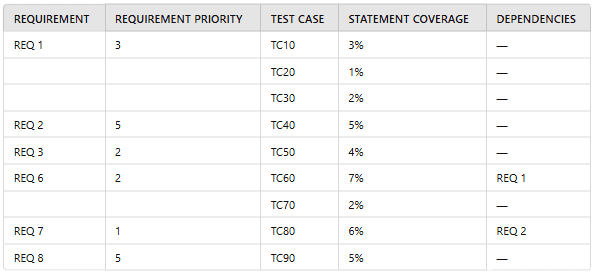iSQI CTFL_Syll_4.0 - ISTQB Certified Tester Foundation Level (CTFL) v4.0
Which ONE of the following options MOST ACCURATELY describes the activities of “testing†and “debugging�
In a two-hour uninterrupted test session, performed as part of an iteration on an Agile project, a heuristic checklist was used to help the tester focus on some specific usability issues of a web application.
The unscripted tests produced by the tester's experience during such session belong to which one of the following testing quadrants?
What type of testing measures its effectiveness by tracking which lines of code were executed by the tests?
Which ONE of the following options MOST ACCURATELY describesstatement testing?
Consider a given test plan which, among others, contains the following three sections: "Test Scope", "Testing Communication", and "Stakeholders". The features of the test object to be tested and those excluded from the testing represent information that is:
Which ONE of the following statements BEST applies checklist-based testing?
Which of the following statements about white-box test techniques is true?
Consider the following examples of risks identified in different software development projects:
[I]. The contrast color ratio for both normal text and large text of a website does not comply with the applicable accessibility guidelines, making it difficult for many users to read the content on the pages
[II]. A development vendor fails to deliver their software system on time, causing significant delays to system integration testing activities that have been planned as part of a development project for a system of systems
[III]. People in the test team do not have sufficient skills to automate tests at the test levels required by the test automation strategy which does not allow production of an effective regression test suite
[IV]. In a web application, data from untrusted sources is not subject to proper input validation, making the application vulnerable to several security attacks
Which of the following statements is true?
Which ONE of the following statements about maintenance testing is CORRECT?
Consider the following table, which contains information about test cases from the test management system:

Which ONE of the following optionsorganizes the test cases based on the statement coverage strategy, while considering practical constraints?



